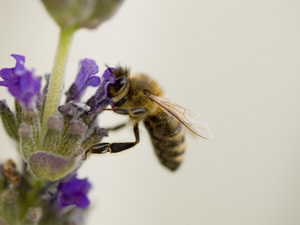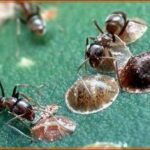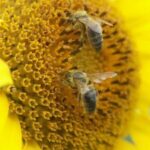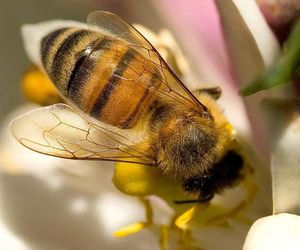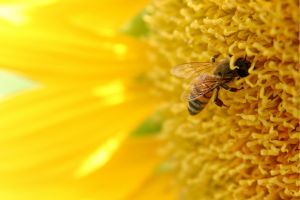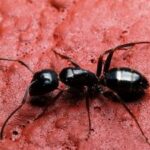The pleasures and pains of spring: budding flowers and pollen; spring picnics and ants; beautiful butterflies and bees. Bee stings are no laughing matter. A few people can shake them off and move on, but that’s very few people. Most of us run to the nearest first aid kit or kitchen.
According to the Center for Disease Control (CDC) as many as 40 to 50 people die each year from bee stings. Individuals allergic to bee stings should always carry an allergy pen which contains epinephrine and wear a medical ID bracelet indicating their allergy.
A bee sting which causes swelling in other areas of the body, like the head or neck; wheezing; dizziness; or a sudden drop in blood pressure are examples of allergic reactions to bee stings. If these symptoms occur seek professional medical help immediately.
A hurt, hard, swollen place is typical of a bee sting. According to the CDC the best thing to do is wash the sting site with soap and water. Then, remove the stinger by scraping over is with gauze or a fingernail. Squeezing the stinger or using tweezers only releases more venom into the sting site.
Once the stinger is removed, the CDC recommends using ice to reduce the swelling. Bee stings, however, have been around a lot longer than the CDC. Not to discount the CDC, but there are other tried and true remedies to reduce the pain and swelling of a bee sting.
There are two commonly used sting remedies in the South. One is a baking soda and vinegar mix applied to the bee sting site. I’ve also seen a baking soda and water mixture used just as effectively, however vinegar seems to remove the sting from a variety of injuries. It is said to draw out poison.
Another common remedy that works very effectively is to apply chewed tobacco to the bee sting once the stinger is removed. It sounds gross and it is gross, but it works effectively.
One skeptical camp counselor tried a treatment using plantain. Plantain is a long or broad leaf weed found in yards and growing through cracks in sidewalks. It’s the weed you pull out of cracks in your driveway. The treatment requires you to chew a few leaves, preferably broadleaf, keeping the plant and saliva in the front of your mouth. Spit the mixture on the sting site. It should be kept on the sting site until relief is felt.
Skeptical, but desperate, the camp counselor found herself in a bind when a student stepped in a wasps nest and was covered in stings. She used the plantain weed to treat the sting and it worked.
According to Mothernature.com, Herbert Luscomb, M.D. recommends rubbing a wet aspirin on the area of the bee sting. The aspirin is said to help neutralize some of the inflammatory agents of the venom. I had not heard of this remedy, but like it a lot more than spreading chewed tobacco to treat a bee sting. Do not use aspirin if you are allergic to taking aspirin by mouth.
Meat tenderizer pastes are also effective treatments for bee stings. Mothernature.com reports that entomologist Philip Koehler, PhD, says the reason meat tenderizer works “is because insect bites and stings are made up of protein – and meat tenderizer breaks down this protein.
I hope you are not among the thousands of people stung by insects each year, but if you are, you probably have a quick, pain relieving remedy on hand.
Resources:
CDC
Learning Herbs
Mother Nature
